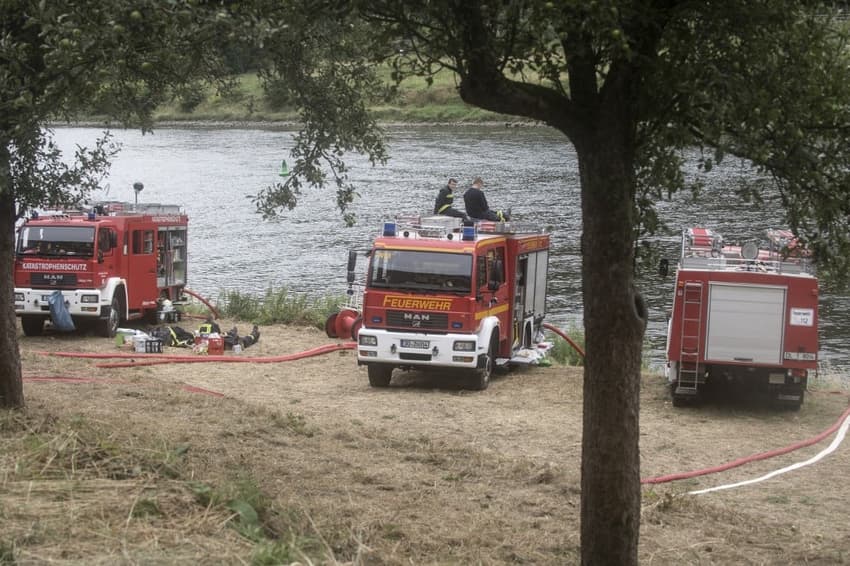German firefighters in 'intense battle' with wildfire

Hundreds of firefighters were locked in an "intense battle" with a wildfire in eastern Germany on Saturday, which is still burning in the wake of a punishing heatwave.
Thirteen water-bombing helicopters joined around 350 firefighters spread across 150 hectares (370 acres) in the Saxon Switzerland National Park, district authorities said.
Four firefighters have sustained minor injuries, they added.
Rain showers on Saturday were not enough to keep the flames at bay.
The fire broke out on Sunday last week in the neighbouring Czech Republic before spreading to Germany.
A fire in southern Brandenburg, also in the country's east, is now under control, local authorities said. It prompted the evacuation of around 700 people earlier this week.
Scientists say climate change is making heatwaves around the world more frequent and more intense, increasing the risk of fires.
READ MORE:
- Hundreds evacuated as forest fires hit eastern Germany
- Germany warns of heat danger and forest fires as temperatures soar
Comments
See Also
Thirteen water-bombing helicopters joined around 350 firefighters spread across 150 hectares (370 acres) in the Saxon Switzerland National Park, district authorities said.
Four firefighters have sustained minor injuries, they added.
Rain showers on Saturday were not enough to keep the flames at bay.
The fire broke out on Sunday last week in the neighbouring Czech Republic before spreading to Germany.
A fire in southern Brandenburg, also in the country's east, is now under control, local authorities said. It prompted the evacuation of around 700 people earlier this week.
Scientists say climate change is making heatwaves around the world more frequent and more intense, increasing the risk of fires.
READ MORE:
- Hundreds evacuated as forest fires hit eastern Germany
- Germany warns of heat danger and forest fires as temperatures soar
Join the conversation in our comments section below. Share your own views and experience and if you have a question or suggestion for our journalists then email us at [email protected].
Please keep comments civil, constructive and on topic – and make sure to read our terms of use before getting involved.
Please log in here to leave a comment.